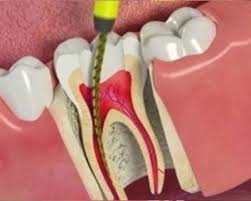Sprained Wrist: Causes, Symptoms, Treatments, and Recovery

A wrist sprain(s) occurs when a ligament in the wrist is partially injured. Ligaments are the dense connective tissues that hold bones together. If they are partially or completely damaged due to any reason, they can be treated and healed with a few preventions and care.
What are the Major Causes of Wrist Sprain?
A fall on an outstretched hand is the most common cause of wrist sprains. The ligaments in your wrist might be damaged if it twists or bends badly or unexpectedly. However, those who actively take part in sports activities are more vulnerable to Wrist Sprain.
This type of injury is widespread in gymnastics, skiing, football, and skating. Specially In ice weather, this type of injury is very common. Furthermore, any activity that causes a rapid, strong impact on the wrist can put unnecessary strain on the ligaments, causing overstretching or ripping.
How Can I Know the Severity of My Wrist Sprain?
They might range from mild to severe, depending on the degree of ligament injury. The wrist sprain is divided into three grades that are mentioned below.
Grade 1 Sprain
This type of sprain is very mild and they are also known as mild sprains. This injury occurs when a ligament extends too far without tearing. It generally happens as a result of unintentional everyday movement.
Grade 2 Sprain
Grade 2 or moderate sprains occur when ligaments are partially ripped or torn. With this level of sprain, it’s not uncommon to experience some loss of function.
Grade 3 Sprain
This is the most serious sprain. It occurs when ligaments are completely torn. Grade 3 wrist sprains require medical attention right away since the ligament may have torn and taken a chip of bone with it. Surgical treatment is often required for these sprains.
How Can I tell that I Have a Sprained Wrist?
Wrist sprain symptoms can range from minor to severe pain with restricted wrist movement, depending on the severity and grade of the sprain. Wrist sprains can cause one or more of the following symptoms:
- Pain
A sprained wrist can cause pain that ranges from a faint aching to strong, continuous discomfort. The pain reduce after a few days, but tasks like holding and gripping can be difficult the until the injury heals completely. Activities that require twisting your hands, such as opening a jar or turning a doorknob, might be unpleasant.
- Weakness
In moderate to severe wrist sprains, decreased grip and pinching sensation, and feeling of weakness in wrist joints can be developed. Those activities that require the use of a hand to push something heavy can worsen the condition.
- Swelling
It’s possible that your wrist is swollen. Swelling can occur when fluid collects in the affected area’s joint and tissue spaces. However, the degree of the sprain usually determines the severity of swelling.
- Bruising
A bruise may form on the skin above the wrist due to blood leaking in tissue spaces. Bruising can result in a change in skin tone that ranges from red to black to blue. It can sometimes spread to the fingers.
- Warmth
Increasing in blood flow to the affected area of the wrist may cause a feeling of warmth.
- Stiffness
Swelling or muscular spasms when the ligaments are injured may induce stiffness in the wrist joint. It can also reduce mobility which is particularly felt while bending the wrist backward.
How Can I Care my Wrist at Home?
If you are suffering from wrist sprains then you can do some home care precautions that can help you to prevent wrist injuries. You can apply ice or cold packs to your wrist for 10 minutes. Attempt to perform this every 1 to 2 hours for the next 3 days or until the swelling has gone.
If your swelling has gone away after 2 or 3 days, apply a heating pad or a warm cloth on your wrist. This can help improve the flexibility of your wrist. Some doctors recommend that you alternate between heat and cold.
If you have a wrist brace or a bandage, you can wrap it around your wrist. Wearing wrist supports and braces are beneficial to avoid injuries and pain.
How Does a Doctor Help to Treat My Sprained Wrist?
A doctor will ask a medical history and perform a physical examination to check the wrist’s stability if a wrist sprain is suspected. If necessary, your doctor will perform some medical imaging tests like X-rays or MRI. These tests can help him to take a closer look at the injured area of the wrist.
- X-rays
Although ligaments are not visible on x-rays. However, in chronic wrist sprains, gaps, overlapping, and rotation of the carpal bones may be visible, indicating ligament injury.
- MRI
An MRI of the wrist can discover ligament injuries as well as injuries to the soft tissues, nerves, cartilage, and joints.
- Ultrasound
Ultrasound of the wrist can detect ligament inflammation and rupture. It can help diagnose the damage to the joint, artery, vein, and nerve. It can also be used to assess swelling and fluid buildup.
Do Wrist Braces and Supports Help Prevent Wrist Sprains?
Wrist braces and supports for sprained wrist can be worn to protect it after an injury or from recurring. They are regularly used to address long-term wrist pain concerns and are frequently recommended or even prescribed by specialists for specific recovery plans. They can help you in many ways like;
Provide Additional Support
Wrist supports and braces may prevent the occurrence of serious injury and pain to your wrists. They can help provide additional support and protection, which helps to strengthen them. They can also help with arthritis, tendonitis, and post-surgery pain, swelling, and stiffness.
Ease Pain and Discomfort
Athletes are susceptible to injury on a daily basis. They cannot stay in bed for an extended period of time, and they are unable to play when they injured their wrists. That’s why they can benefit from wrist braces in certain situations. These Braces help in relieving pain and speeding up the healing process by providing maximum support.
Strengthen Weak Wrists
In sports, wrist joints are prone to a lot of wear and tear. It can cause severe wrist discomfort and damage. However, a wrist brace may provide support if you are suffering from any wrist injury. If you have severe ankle pain, an ankle brace may help. It can help in strengthening and stabilization of your wrist joints.
Verdict
A wrist support can help relieve pain and suffering caused by wrist sprain, strain, tendonitis, arthritis, and other injuries. Whether you’ve just suffered from an injury or are recovering from one, the wrist support will brace your wrists and prevent future harm.
However, the highest-quality braces and supports are required to achieve the maximum benefit. At 360 Relief, Wrist Supports & Braces are available, and they will support your wrist while also helping to stabilize your joints and muscles. They are available in various sizes and colors to suit your demands and preferences.





